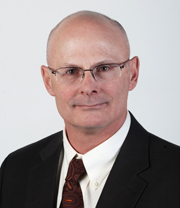
DNR commentary: Legacy Amendment
5 years later: a promise of cleaner water, healthier environment - By Tom Landwehr
Commissioner, Minnesota Department of Natural Resources
Five years ago this month, Minnesotans went to the polls and took a bold action and approved a landmark conservation initiative known as the Clean Water, Land and Legacy Amendment.

DNR Commissioner: Tom Landwehr
On the eve of Thanksgiving, I’d like to reflect on this important constitutional amendment. During the past five years, the amendment has been fulfilling its promise of creating lasting investments in clean water, healthier habitat, better parks and trails and a robust arts and cultural heritage. It is something we can all be thankful for.
In approving the Legacy Amendment, Minnesota voters imposed a three-eighths of 1 percent tax on themselves for 25 years until 2034. Just five years later, that tax has generated more than a billion dollars for Legacy projects, of which the Minnesota Department of Natural Resources has been allocated about one-fifth of Legacy dollars – or roughly $215 million.
The DNR has invested your Legacy Amendment dollars wisely to protect, maintain, and enhance natural landscapes, healthy watersheds and the public places that make it possible to experience them to the fullest. Legacy funds are also providing opportunities like never before to "open doors" to outdoor recreation, particularly for young people.
You can learn about these investments on the DNR website at www.mndnr.gov/legacy, but I’d like to highlight a few of them here:
The DNR oversees 689 wildlife management areas in the agency’s 32-county “southern” region of the state. While these public lands comprise only 1.19 percent of the total land in these counties, they represent some of the most ecologically diverse and important lands in the region. The DNR is working hard to improve and expand on these lands using Legacy dollars from the Outdoor Heritage Fund.
During the last three years, three roving “habitat crews” have enhanced 23,000 acres of grasslands through controlled burns, plantings and restoration -- nearly doubling the DNR’s capacity to make this habitat better. Additionally, Legacy dollars have been used to enhance large blocks of grassland by removing woody invasive species and seeding new prairie. In the southern part of the state alone, 6,500 acres of grassland habitat have been enhanced and 820 acres of new grassland have been seeded.
In our Parks and Trails Division, more people than ever are having positive experiences in nature as a result of Legacy funding for expanded programming, such as the “I Can Camp” and “I Can Climb” events, which teach skills to newcomers to the outdoors. Participation in these and other interpretive programs totaled 285,620 in 2012, a 37 percent increase since 2008, the year before Legacy funding became available to the Parks and Trails Division.
In another example of a long-term investment, the DNR used Legacy money from the Parks and Trails Fund to update and enhance the River Inn, a state building at Jay Cooke State Park that is listed on the National Register and hadn’t been significantly remodeled since the 1970s. Originally constructed by the Civilian Conservation Corps between 1939 and 1942, the structure was built with local rock and white pine trees. Among other things, the building has been updated with new ADA-accessible restrooms with hot water, energy-efficient lighting and power-assisted exterior doors and new interpretive exhibits.
Minnesota’s forests and your access to them have been bolstered with Legacy funds. Legacy dollars were used to protect 190,000 acres of working forest land in Itasca, Aitkin, St. Louis, Cass, Beltrami, Koochiching and Clearwater counties called the Upper Mississippi Forest Legacy Project. They were also used to protect another 20,000 acres through several smaller projects. By using Legacy funds to secure easements and acquisitions, existing public forests are connected to create several thousand square miles of contiguous, protected habitat for wolves, black bear, white-tailed deer, ruffed grouse, woodcock and countless numbers of other animals and plants. This investment keeps the lands open forever for outdoor recreation, including hunting, fishing, hiking and snowmobiling.
The DNR is also making investments in clean water using the Legacy funding from the Clean Water Fund. During the next 10 years, restoration and protection strategies will be identified and implemented for 81 major watersheds through state and local partnerships. Along the Buffalo River, one of 10 major watersheds in the Red River Basin, the DNR helped find the most effective places to use Legacy money for managing water quality issues and flooding. Closer to the Twin Cities, the DNR is using Legacy money to develop a computer model that can be used to track water flow through the 70-square mile area of the Shakopee Creek headwaters watershed, which will help local implementers reduce the flow of pollutants that threaten the lakes, streams and wetlands in the region.
The agency is also using Legacy funds to map groundwater resources and monitor groundwater levels to ensure long-term sustainable groundwater use. Legacy funds are being used to create “county geologic atlases,” collections of maps and other information that describe an area’s aquifers, including where and how water moves through them underground. The atlases, which identify pollution-sensitive areas, are critical information for communities as they plot their future water supplies.
These are just a small number of the important accomplishments that have been made with Legacy funds in just a few years. This is just the beginning of the lasting Legacy investments that we will be able to cherish, celebrate and be thankful for in the years to come.
About Rolex
For further information, please contact Matt Tove, Club Manager, at 773-9531 or stcroixyc@gmail.com.
TOP
|